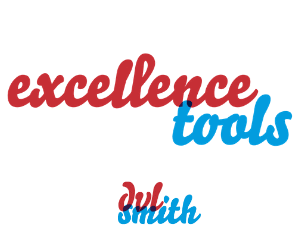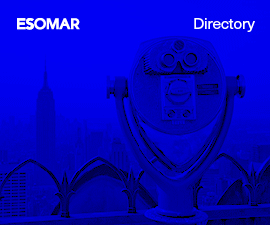- What we do
- Membership
- Knowledge
- Events
- Contact
Log in to your MyESOMAR account

You searched for: ""
ANA has found 8527 results for you, in
244 ms.
Currently showing results 1954 to 1962.
Didn’t find what you were looking for? Try the Advanced Search!
Research papers
 From set top meters to set top boxes
From set top meters to set top boxes
The migration from analogue to digital television is compromising traditional, sample centric audience measurement techniques;- diaries and Peoplemeters.To address this, TNS has invested in a comprehensive programme encompassing research, new...
Catalogue: ESOMAR/ARF WAM Conference 2005: Cross Media
Authors: George Shababb, Anthony Taylor
Company: KANTAR TNS Malaysia
 June 23, 2005
June 23, 2005
Citation
Shababb and Taylor (2005a, June 23). From set top meters to set top boxes. ANA - ESOMAR. Retrieved April 28, 2024, from
https://ana.esomar.org/documents/from-set-top-meters-to-set-top-boxes
Research papers
 Is this remote stuck or what?
Is this remote stuck or what?
The paper demonstrates that audiences have preferences for viewing specific networks that are not driven solely by program content, that this effect is consistent over time, and considers the implications for network promotion and for advertisers....
Catalogue: ESOMAR/ARF WAM Conference 2005: Cross Media and TV
Authors: Brian Rock, Sally Pearse
 June 23, 2005
June 23, 2005
Citation
Rock and Pearse (2005a, June 23). Is this remote stuck or what?. ANA - ESOMAR. Retrieved April 28, 2024, from
https://ana.esomar.org/documents/is-this-remote-stuck-or-what-
Research papers
 Time to change time
Time to change time
Most people in the industry will agree that the dynamic of television has changed and that the dynamic of all other media are changing too. Considering that we face a new media environment and that we need to address the stronger than ever demand of...
Catalogue: ESOMAR/ARF WAM Conference 2005: Cross Media
Authors: Ken Holden, Gilles Santini
 June 23, 2005
June 23, 2005
Citation
Holden and Santini (2005a, June 23). Time to change time. ANA - ESOMAR. Retrieved April 28, 2024, from
https://ana.esomar.org/documents/time-to-change-time
Research papers
 A cost effective approach for measuring out-of-home viewing
A cost effective approach for measuring out-of-home viewing
Even though the idea of a portable-only panel may seem appealing for its conceptual simplicity, a deeper analysis reveals a number of systematic drawbacks that may easily offset any advantages over fixed-meter panels.On the other hand, capturing the...
Catalogue: ESOMAR/ARF WAM Conference 2005: Cross Media
Author: Fernando Falcon
 June 23, 2005
June 23, 2005
Citation
Falcon, F. (2005a, June 23). A cost effective approach for measuring out-of-home viewing. ANA - ESOMAR. Retrieved April 28, 2024, from
https://ana.esomar.org/documents/a-cost-effective-approach-for-measuring-out-of-home-viewing
Research papers
 Why a crowded platform beats a single source
Why a crowded platform beats a single source
Channel planning is not about a single factor, but about balancing the power of a medium with its reach, the precision of targeting with cost, and understanding the tactical needs of the campaign with the characteristics of delivery.With so many...
Catalogue: ESOMAR/ARF WAM Conference 2005: Cross Media and TV
Authors: Tim Foley, Geoff Wicken
 June 23, 2005
June 23, 2005
Citation
Foley and Wicken (2005a, June 23). Why a crowded platform beats a single source. ANA - ESOMAR. Retrieved April 28, 2024, from
https://ana.esomar.org/documents/why-a-crowded-platform-beats-a-single-source
Research papers
 Measuring and optimising the effectiveness of mixed media campaigns
Measuring and optimising the effectiveness of mixed media campaigns
Many have asked themselves how the effectiveness of mixed media campaigns can be measured, and more specifically, how the effects of different media can be found. This paper suggests some solutions for these problems through Strategic Communication...
Catalogue: ESOMAR/ARF WAM Conference 2005: Cross Media and TV
Authors: Arie K. den Boon, Suzanne M.A. Bruin, Theo J.F. van de Kamp
 June 23, 2005
June 23, 2005
Citation
den Boon, Bruin and van de Kamp (2005a, June 23). Measuring and optimising the effectiveness of mixed media campaigns. ANA - ESOMAR. Retrieved April 28, 2024, from
https://ana.esomar.org/documents/measuring-and-optimising-the-effectiveness-of-mixed-media-campaigns
Research papers
 New insights on first-time electronic data on out-of-home and time-shifted television viewing
New insights on first-time electronic data on out-of-home and time-shifted television viewing
Increasingly, the new mantra among today's leading advertisers is, 'Know your consumers! Know who they are, what they're doing, and when, where and why they're doing it.'These goals translate into important new objectives for marketers, broadcasters...
Catalogue: ESOMAR/ARF WAM Conference 2005: Cross Media
Authors: Robert H. Patchen, Beth Webb
Company: Nielsen
 June 23, 2005
June 23, 2005
Citation
Patchen and Webb (2005a, June 23). New insights on first-time electronic data on out-of-home and time-shifted television viewing. ANA - ESOMAR. Retrieved April 28, 2024, from
Research papers
 Progress towards media mix accountability
Progress towards media mix accountability
PPM commercial audience estimates offer insight about consumers' avoidance of tv commercials. Total commercial avoidance, an average 7%, is composed of nearly six- tenths channel switching and four-tenths due to other 'interruptions'. Program content...
Catalogue: ESOMAR/ARF WAM Conference 2005: Cross Media
Authors: Roberta M. McConochie, Leslie Wood, Beth Uyenco, Chris Heider
Companies: Nielsen, OMD Group
 June 23, 2005
June 23, 2005
Citation
McConochie, Wood, Uyenco and Heider (2005a, June 23). Progress towards media mix accountability. ANA - ESOMAR. Retrieved April 28, 2024, from
https://ana.esomar.org/documents/progress-towards-media-mix-accountability
Research papers
 The multi-media blitz
The multi-media blitz
In times of media audience fragmentation and astronomical costs involved with launches of new TV shows, this paper focuses on providing broad, actionable directions towards audience creation for new TV shows through the usage of optimal multimedia...
Catalogue: ESOMAR/ARF WAM Conference 2005: Cross Media and TV
Authors: Atul Phadnis, Amogh Dusad
Company: TAM Media Research
 June 23, 2005
June 23, 2005
Citation
Phadnis and Dusad (2005a, June 23). The multi-media blitz. ANA - ESOMAR. Retrieved April 28, 2024, from
https://ana.esomar.org/documents/the-multi-media-blitz







